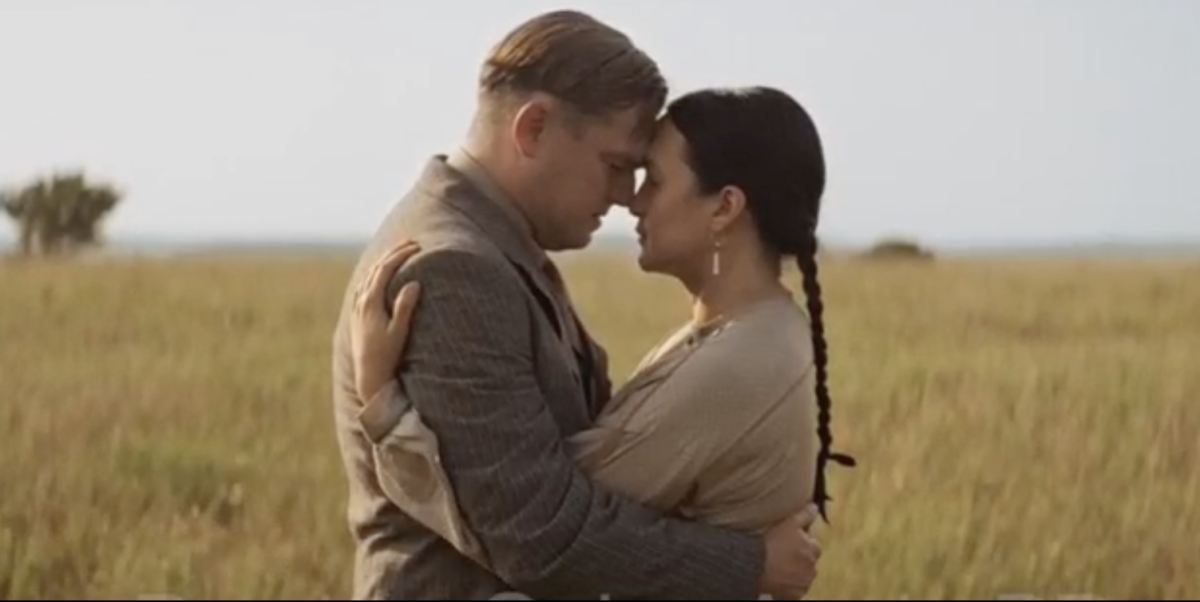
The hot ticket at Cannes — Martin Scorsese’s three-and-a-half hour opus “Killers of the Flower Moon,” adapted by the director and Eric Roth from David Grann’s 2017 non-fiction bestseller — screened ahead of its Saturday festival premiere in New York and Los Angeles to give critics a head start on writing their reviews. It’s clear why Apple chose not to play the film in Competition: it’s earning a range of reactions.
Sumptuously produced, the $200-million western crime saga transports the viewer to ’20s Oklahoma, where vast oil fields have brought immense wealth to the Osage Nation. While Grann’s book focuses on the procedural aspects of solving the so-called Reign of Terror that led to dozens of mysterious Osage deaths, Scorsese and Roth create a three-hander centered on the uncle and nephew played by Robert De Niro and Leonardo DiCaprio (Scorsese regulars united for the first time with their favorite director) and Native American actress Lily Gladstone (Kelly Reichardt’s “Certain Women”) as Ernest Burkhart’s wise and suspicious Osage wife, Mollie Kyle, who identifies her husband as a “coyote.”
These three actors will dominate Oscar talk at year’s end. Oscar-winner De Niro (“Raging Bull,” “The Godfather Part II”) is formidable in a supporting role as the William “King” Hale, the charming and relentless master manipulator behind the murders who persuades his slow-witted World War I veteran nephew to not only marry the statuesque Kyle, but hire minions to carry out the murders of her two sisters, among others, in order to eventually score her family’s headrights.
Two hours into the slow-paced epic, Texas Ranger hero turned FBI agent for J. Edgar Hoover, Thomas Bruce White (Jesse Plemons), arrives on the scene with a cadre of agents who swiftly piece the sordid murder plot together and proceed to trial. While Roth’s original script, like Grann’s book, played out like a police procedural as White (originally to be played by DiCaprio) solves the intricacies of the crime, Roth pivoted to give the Osage more gravitas in the narrative. Oscar-winner DiCaprio (“The Revenant”) found the role of Ernest Burkhart, a man who loves a woman while ordering the murder of her family, more complex and fascinating than the FBI man, who could play like a white saviour. If Plemons therefore does not carry enough screen time to warrant Oscar consideration, DiCaprio is scoring kudos for his layered performance as a blind follower who does what he is told, even if it means poisoning someone he cares for deeply.

Gladstone steals the show. An actress who was on the verge of giving up her profession, she holds the screen against two powerful movie stars. In one compelling scene, as Burkhart is clumsily wooing her, a thunder storm descends on the house. He wants to keep talking. Kyle tells him to be quiet and listen to the storm.
Revered auteur Scorsese, who could certainly have trimmed the length of his western gangster story, should nonetheless wind up in Oscar contention for the 15th time. He has been nominated 14 times, nine for Best Director, two writing nods shared with Jay Cocks, and three Best Picture nominations. He and his Oscar-winning co-screenwriter Eric Roth (“Forrest Gump”) could also land an Adapted Screenplay slot.
Much like Jane Campion’s “The Power of the Dog” or Scorsese’s own “The Irishman,” which scored ten Oscar nominations, Oscar voters will surely wind up singing “Killer Moon”‘s extraordinary crafts: thrice-nominated cinematographer Rodrigo Prieto (“The Irishman,” “The Silence,” “Brokeback Mountain”), three-time winning editor Thelma Schoonmaker (Scorsese’s “The Departed,” “The Aviator,” and “Raging Bull”), two-time nominee production designer Jack Fisk (“The Revenant,” “There Will Be Blood”), four-time nominee costume designer Jacqueline West (“Dune,” “The Revenant,” “The Curious Case of Benjamin Button,” “Quills”), and never-nominated composer Robbie Robertson (Scorsese’s documentary “The Last Waltz”), whose mother was Cayuga and Mohawk.
While the Apple Studios production will see October theatrical release by Paramount Pictures before it goes online, many Academy voters will wind up watching it on the screening portal, which is far from an ideal viewing experience for this immersive epic.















